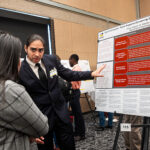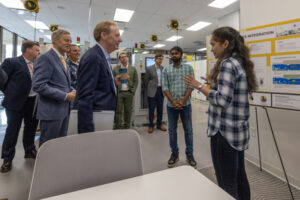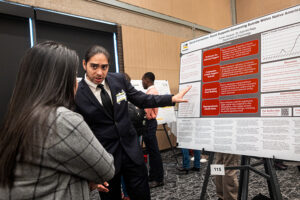UWM’s current financial picture is strained and in desperate need of investment if it is to sustain its mission in the future, Robin Van Harpen, UWM vice chancellor for finance and administrative affairs, told a group of UW System regents Thursday.
Among the sobering statistics: Since 2009, state appropriations to UWM have declined by about 20% and, with the combination of the legislative-imposed tuition freeze and enrollment declines, UWM has seen a 32% decline in tuition revenue since 2012.
“Despite UWM’s designation as a research institution, for decades, until about 2010, UWM was able to make this work largely through enrollment and tuition revenue growth, decade after decade. That model no longer exists,” she said at the Business and Finance Committee meeting, part of the June Board of Regents meeting being held at UWM.
Because of budgetary cuts, which at times have been extreme, she added, it is no longer sustainable for UWM to meet its goals, which directly affect the economic health of the state.
UWM has accomplished some success in the last decade with an annual $5 million in gifts earmarked for scholarships. Four- and six-year graduation rates among low-income students have risen, Van Harpen said. But the administration’s goal is to bring up the institution’s graduation rate from 47% in 2021 to 60% by the fall of 2027.
“That if we achieve that, it could, with other factors including enrollment being equal, result in 30% more graduates that we put out into the state of Wisconsin and the talent pipeline,” she said.
To graduate more students in high-demand careers, UWM will need support to increase student financial aid, improve student success infrastructure and boost research in order to protect its R1 status, the top-tier rating for research institutions set by the Carnegie Classifications of Institutions of Higher Education.
Increase student financial aid
UWM has a high number of low-income undergrads and most of them borrow to pay for college. Yet UWM’s tuition and fees are higher than the UW System average because of its research mission. To meet this need, Van Harpen said, UWM needs to increase student scholarships. She said she is encouraged by conversations to expand to all UW System institutions the full tuition scholarships programs like the Badger Promise and Bucky’s Tuition Promise that are available to low-income students attending UW-Madison.
To offer an example of the benefit, she said, if $20 million in base funding for a Promise program were available, the additional financial aid that UWM could offer low-income students would lower their unmet need to average levels among students in UW System institutions.
“Your presentation offers a clear picture of the impact on the students,” said Regent Scott Beightol. “We’re saying to the students who come to UWM, ‘The doors are open, oh and, by the way, we’re going to saddle you with the highest costs in the system.’ We’ve got to fix that.”
Student success infrastructure
Through participation in programs like Moon Shot for Equity, UWM aims to close the 18-point achievement gap between white students and underrepresented minorities.
To accomplish its goal of increasing access to underserved populations, UWM’s is investing about $5 million in one-time funds this fiscal year to provide additional support to ensure student success.
“We’re putting our money where our mouths are by using one-time balances to fund long-term initiatives because we need that infrastructure to keep moving our success metrics forward,” Van Harpen said. “But without the recognition of a longer-term need, these will be difficult to sustain.”
Research support
Additional funding for UWM’s research mission would allow the university to restore faculty lines in economy-driving disciplines and increase its federal research funding.
The severity of UWM’s budget tightening has led to a decline in the number of faculty members on the main campus. Van Harpen said full-time faculty numbers have fallen from 810 in fall of 2012 to 597 in fall 2021.
UWM’s research and development spending dropped 12.1% between 2011 and 2019, while at UWM’s peer institutions’ spending as a whole rose by 13.8%, according to a report last year by the Wisconsin Policy Forum.
“The loss in faculty is particularly concerning because it directly impacts our numbers of research proposals, PhD students that can be supported and ultimately our ability to retain our R1 status,” Van Harpen said. “We’re squeezed to the point that we’re losing traction in a way that could become irreversible.”







